A beautiful and exquisite plant, Japanese gladiolus, looks great on any flowerbed and is considered a "favorite" of many landscape designers. Unpretentious bully culture is distinguished by abundant long blossom from early summer and to late autumn. Special decoration of the Japanese gladiolus are gentle and sophisticated flowers of various shades. No less decorative and perennial leaves forming thick and lush curtains. Gladiolus Japanese - enduring and life-bearing plants, planting and care for which will not be difficult.
Japanese gladiolus, interesting facts
The Japanese gladiolus has several, difficult to memorize and pronunciation, titles. This bulb miniature gladiolus, in Botanica is also classified as crocosmia, tritonium or montstour.
- The name "Crocosmia" occurred from the Greek word "KROKOS" and "OSME", respectively, "Crocus \\ Saffron" and "Smell". A similar combination is explained similar to the saffron smell of dry flowers of Japanese gladiolus.
- As for the more obsolete title "Montstour", is the name of the famous French botany, which occupied the selection of the garden form of Japanese gladiolus.
- The rarely encountered Tritonian name is translated as "vane" and is associated with a variance of a splash form of inflorescences of the plant.
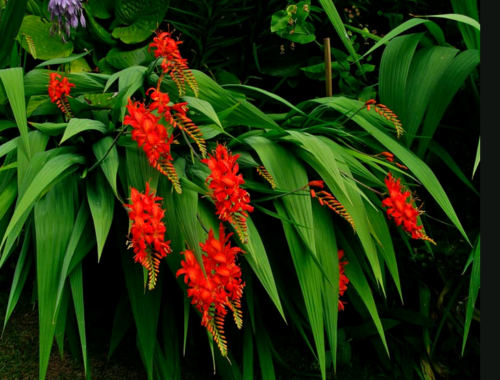
- Externally, the Japanese gladiolus is similar to the usual ordinary gladiolus for us, while it looks more sophisticated. Inflorescences are miniature, and the kurtny dense and lush.
- A variety of inflorescence palette allows you to grow a beautiful floral culture in almost any landscape. Graceful twigs look perfectly both at the flowerbed and a bouquet. Moreover, the flowers can stand in a cut from 2 to 4 weeks, remaining all the same fresh and graceful, and gradually revealing buds.
- The dry soulssence of Japanese gladiolus, which are often used to create winter bouquets or Ikebane look original. An indispensable companions of bought compositions with the participation of Japanese gladiolus are cereal plants.
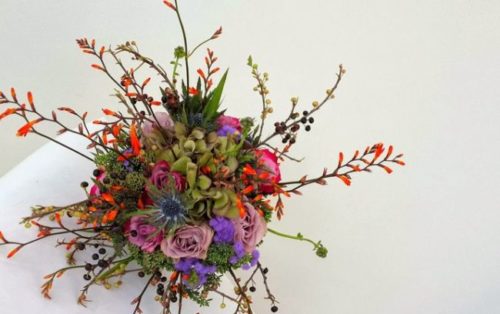
- The landing of mini-gladiolus looks effectively as an independent "bright spot" on the green background of the lawn and in combination with other plants on the flower bed.
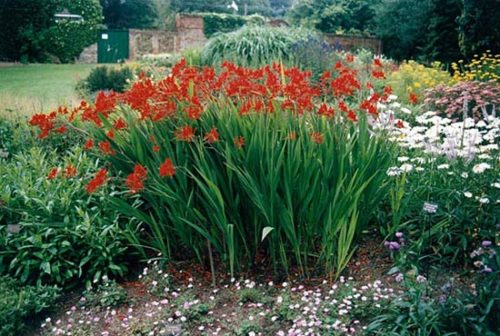
Japanese gladiolus, description of the plant
- The miniature gladiolus compared to the usual representative of the type of gladiolus looks more graceful and more tender.
- Lukovichny culture, Japanese gladiolus, refers to the family of iris and cultivated in many countries, starting from the 19th century. South Africa is considered the historical natural range of Gladiolus.
- The main decoration of the bulbous plant is small, up to 5 cm in diameter, star flowers, in shape resembling a funnel. Lush buggy inflorescences are disclosed gradually, from the bottom up, leaving behind no less decorative pods with seeds.

- Loose thin risels of Japanese gladiolus externally similar to the iris flowers. It's amazing that on one bush of gladiolus, the palette of paints may be the most diverse: from the bright scarlet to a gentle purple. There are varieties with flowers of orange, yellow, red shades.
- Flowers love culture for prolonged and abundant flowering, beginning in July and ending in the September-October month. And a pleasant thin fragrance fills the garden with magical notes of the "false saffron".
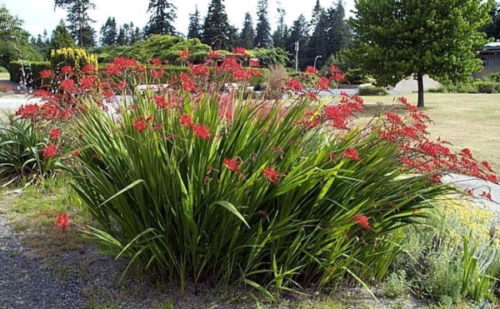
- Clubneelukovitsa at the gladiolus of small sizes, is covered with several layers of protective mesh shell. One adult bulb "produces" an average of 3-4 bloomon and forms several replacement bulbs during the season.
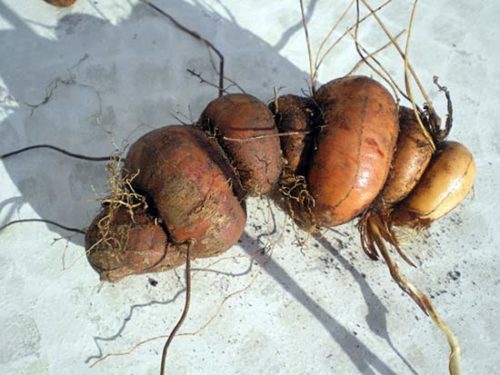
- The root system of gladiolus is bunk. First, the roots of the planting bulb (maternal) are growing, and then (during the formation of "children-bulbs") appear roots between the maternal and substitute bulb. Roots are developing until flowering on the occurrence, after which they are suspended in growth.
- The narrow and mild leaves of the montstour grow up to 60 cm long, going to the bottom (at the root) into the fan-shaped outlet. According to the structure of foliage, the perennial is often compared with a rink (gladiolus ordinary). Long green leaves give the plant special attractiveness and charm.
- A branched thin stem can reach a height of up to 1-1.5 meters. This feature sharply distinguishes the montstour from the usual, thickened "arrows" gladiolus.
- Resistant to diverse climatic conditions, a terrible Japanese gladiolus, in the conditions of the harsh middle strip of Russia, is still not able to winter in the open soil. The clubnelaukovitsa dig up for the winter and stored in a cool place. In the southern regions, the plant leaves winter on the flowerbed, providing additional shelter.
Japanese gladiolus, where to buy
You can purchase exotic gladioles planting material in specialized flower shops, in botanical gardens or nurseries.
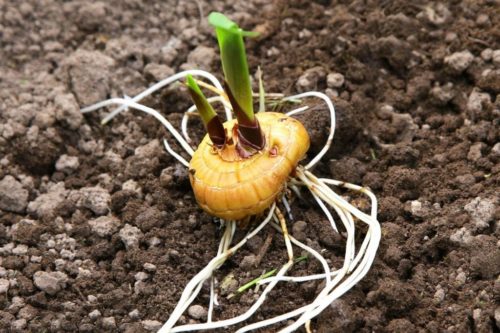
- If plant bulbs are bought, it is important to pay attention to their appearance. It should be not very large (old), but not very small clubnelluca. Ideally, the bulbs are medium sized, without visible damage or disgusting.
- If the bulb exceeds 4.5 -5 cm in diameter, is an old bulb, unsuitable for landing. On average, each bulb turns out to be productive not more than 4 years, after which it can only be used to collect seeds and their further germination.
- If an acquired bulb with a clean small don, is the main bulb and you can try to divide it. To do this, the bulb is purified from husks and "reveal" according to a noticeable division line. As a rule, two sprouts will be noticeably on such bulbs - this means two bloomrs will be formed. On the furrows lying between the sprouts and share the main bulb for two full-fledged landing bulbs.
- It is not necessary to acquire too dry clubnellukovitsa, they can be "dead." If the bulbs are overpowering, you can try to "reanimate" them. To do this, they are placed in the boxes with peat or moss, and leave in a cool place (for example, on the bottom shelf of the refrigerator).
- When choosing a variety of Japanese gladiolus, it is important to draw attention to its key characteristics: frost resistance, composure color, height of the bush. For example, the height of the plant may vary from 50 cm to 1.5 m and, in the latter case, the perennial gap will be required.
Japanese gladiolus, popular varieties
The most popular and common varieties in our country are frost-resistant small-bedroom molds of the moth.
- Japanese gladiolus "Lucifer".
Frost-resistant variety capable of carrying frosts up to -30 0C. With additional shelter, winter in the open soil. Tall gladiolus reaching height to one and a half meters. Among the flower water, the variety is recognized as one of the brightest and most beautiful. Soundlessness of saturated, bright red, stem is stable and represented.
- Japanese gladiolus "Mason".
The variety is highly frosting and straightened.
- Japanese gladiolus "Emily Mackenzie".
The grade is characterized by good frost resistance and relatively late flowering period. The decorative form of gladiolus is characterized by symmetrical accommodated inflorescences of orange-brownish tones with bright red splashing in the center of each flower. In height, the plant reaches an average of about 60 cm.
- Japanese gladiolus "HIS Majesty".
The variety in translation means "His Majesty". Differs in weak frost-resistant qualities and, as a rule, does not winter in the open soil.
- Japanese gladiolus "Pots".
The variety is highlighted by high stem, reaching in a height of up to 1 meter, with narrow smooth leaves and gentle-pink small-ceiling inflorescences. Water and light-loving, unpretentious, quickly adapts to new climatic conditions.
- Japanese gladiolus "George Davison."
Gladiolus has amber-colored inflorescences, not more than 80 cm in height.
- Japanese gladiolus "Masonicum".
Tall grade reaches a height of up to 1-1.5 m and is characterized by small orange inflorescences and sword-shaped corrugated leaves. Blossom abundant and long, comes in mid-summer. The variety is distinguished by high winter hardiness.
- Japanese gladiolus "Babylon".
Sharpening (up to 50 cm) Sustained and compact gladiolus bush with orange inflorescences.
- Japanese gladiolus "East Star".
A beautiful bright name of the perennial received thanks to an unusually large (in diameter up to 10 cm) and very beautiful star flowers of a bright orange colors. Tall grade reaches a height of up to 1 meter and is considered one of the most beloved in landscape designers and flowerflowers. Weakly frost-resistant.
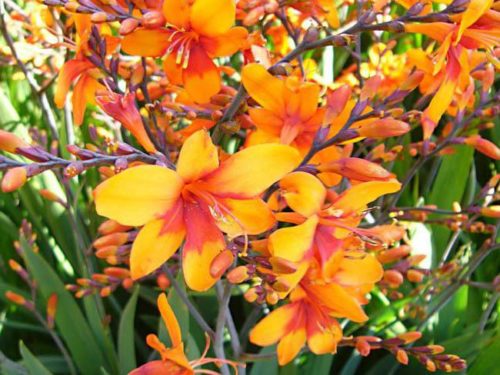
- Japanese gladiolus "buzzed".
Rannetic grade with inflorescences of bright orange shades. Flowering occurs early in June, and it is distinguished by an extraordinary darkness and abundance. Height can reach up to 1-1.5 m.
- Japanese gladiolus "Canary Islands".
It is highlighted by bootons of yellow color, no more than 60 cm. Decorative form of Japanese gladiolus, widely used in decorating landscape zones.
- Japanese gladiolus "Paniculata".
Plant with orange medium-sized buds and corrugated bright green leaves. The variety is considered to be Rannetic and highly frosty, height reaches up to 1-1.2 m.
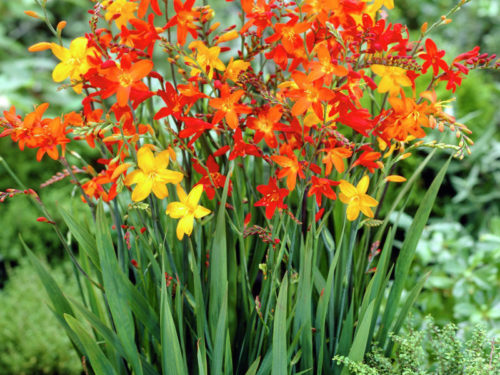
Features of the cultivation of Japanese gladiolus
At its plot, the exotic kind of gladiolus is completely simple. This will require seeds, so-called. "Baby" or full-fledged clubneelukovitsa plants.
- Landing with adult bulbs makes it possible to see the flowering plant of the montstour already in the year of planting, which you will not say about the seed method of disemboditating many years of decorative culture. At best, the bloom of gladiolus, planted with seeds, will come only 2 years after sowing.
- Planting plants is carried out in spring or autumn. Taking into account the thermo-loving nature of the bulbous culture, landing material landing is best planned not in the winter. The most favorable period is the second half of the spring, when the soil is finally warming up and there are no risks of the appearance of return freezers.
- The group landing of Japanese gladiols lined in several rows is most effectively watching. Grounding, bushes become lush and thick, and flowering - abundant and long. Similar advantages of flower products are successfully used to decorate flower, park zones and other landscapes.
- Japanese gladiolus perfectly tolerate any neighborhood. Perennial bulbous culture grows well and combines with many colors: dahlias, chrysanthemums, Echinacea, Rudbequie, Lilyik, and others.
Landing of Japanese gladiolus
Japanese gladiolus planting technology is not much different from landing of an ordinary gladiolus or any other representative of the Iris family. But, nevertheless, some features of landing and care for the Japanese gladiolus are available.
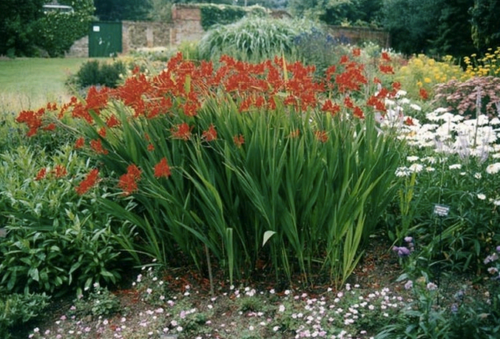
Choosing a place to land a Japanese gladiolus
- Lightweight culture, montstour, prefers outdoor solar sites or a small half. The plant, landed in the shade, most likely will not bloom.
- Place for landing is better to choose without drafts so that the wind does not break the gladiolus flock.
- For the landing of the Japanese gladiolus, the locality with a shallow groundwater occurrence is well suited. At the same time, rain or melt water should not be stated on the site, as it can lead to the booting of clubnellukovits.
- The soil for a bulbous representative should be fertile, light, loose and moderately humid. At the same time, the stagnation of water is unacceptable so that the clubnelukovitsa does not hesitate.
- The soil for planting tuberukovichny is better to prepare in advance, for example, in the fall. The plot is dripping, fertilizers contribute (humus, reworked manure, mineral complexes and, if necessary, hated lime) and level. For good water permeability and soil drainage, you can add sand in the Sand Sandage.
- Mineral fertilizers are best used superphosphates, potassium chloride and nitrogen-containing complexes. Nitrogen fertilizers are entered immediately before planting, in spring.
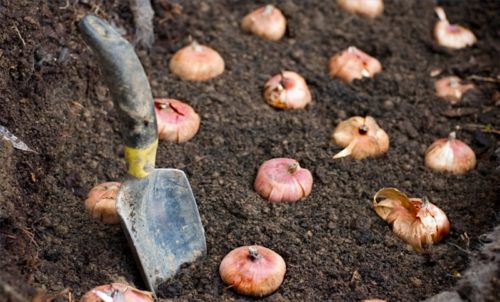
Japanese Gladiolus Growing Agrote
- Before boarding, the bulbs are pre-prepared: a month before landing, they are taken out of the basement, withstand at room temperature, slightly purified from the shell and separated. Thick "nests" are disassembled into parts, sort (separating "children"), cut roots and residues of stems.

- The sorting of gladiolus bulbs spend on the 3rd parameters based on the size of the bulbs. The 1st group includes the largest copies with a diameter of 3 to 3.5 cm; to the 2nd group - from 2.5 to 3 cm; The 3rd group is the smallest fraction of bulbs, a diameter of 1.5 to 2.5 cm.

- Prepared clubnellukovitsy, incl. And small "kids", immediately before planting, poured a weak (0.1%) solution of manganese. Potassium permanganate (manganese) has a disinfecting effect and stimulates the rapid germination and the root formation of bulbs. Winter grades of the Japanese gladiolus are digging and divided every 3-4 years.
- When landing, the bulbs lay in the soil to a depth of 8 to 15 cm. The larger than the bulb - the deeper the landing is carried out. The smallest copies are "kids", do not plunge more than 4-5 cm. Such bulbs will be able to bloom only in a year.
- The interval between the plantings of the bulbs is withstanding about 10-12 cm. Close-down tubnelukovitsa can be differently: rows, chaotically in the area, in checker, etc.
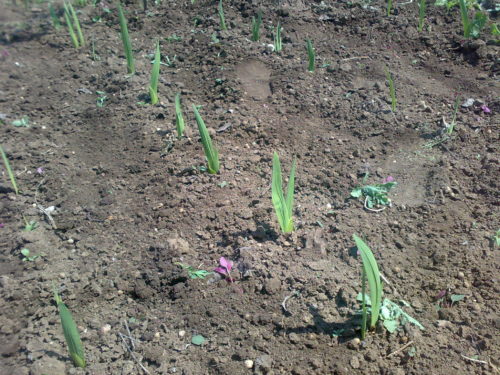
- When landing on one site of different varieties of Japanese gladiolus, it is important to withstand a certain interval between the varieties to avoid recovery and keep the purity of the variety line.
- So that the flower of gladiolus blooms as early as possible, you need to pre-grow it at home (in pots), and then planted in an open soil with an adjacent room of the earth.
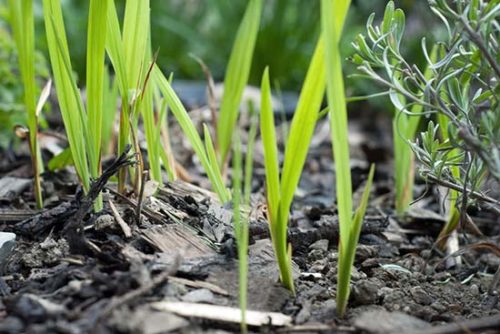
Japanese gladiolus, care characteristics
Montstrance is considered an unpretentious culture, the care of which does not require special skills. Watering, weeding, loosening and feeding are the main agrotechnical measures for the successful cultivation of bulbous perennials on its plot.
Watering, loosening and suspension of Japanese gladiolus
- Watering the Japanese gladiolus is needed moderately, without overcoating or, on the contrary, strong cutting. Excessive watering and stagnation of moisture can lead to the loading of tuberukovitsa, and dry ground - to fading and falling off buds.
- Watering gladiolus, you need to constantly evaluate the condition of the soil: it should be slightly humid. Therefore, watering regulate depending on the weather conditions and climate of the region.
- Drop the ground around the gladiolus needs neatly and shallow so as not to damage the bulbs.
- Some tall varieties of Japanese gladiolus need to be taped.
Feeding and making fertilizers for Japanese gladiolus
- The Japanese gladiolus responds positively to a fertilous fertile soil.
- Fertilizers can be made of fertilizers several times during the season: before the start of flowering, during the bootonization period and in the summer, during the period of active flowering.
- The first feeding (spring, before flowering) is carried out by a full mineral complex from the average calculation: 3 g per 1 liter of water. So "feed" montstour can be twice a month.
- During the formation of buds, potash fertilizers are suitable, 2 g per 1 liter of water.
- During the flowering of the bushes (twice a month) watered a cowboy infusion (1:10).
Fighting diseases and pests of Japanese gladiolus
- Disease-resistant montpsia may occasionally affect diseases peculiar to all gladiolus.
- The fungal disease, fusariosis, manifests itself with the yellowing of the tips of the leaves, which will eventually raise and die over time. If the plant is not "treated" from dry rot - it can completely dry, as the spores fungus penetrate not only in the ground part of the plant, but the clubnellukovitsy are also affected. The development of the disease provokes drought, excessive convergence, thickened plantings of bulbous culture. Plants affected by fusarium are subject to destruction.
- The disease called "jaundice" or "grassyness" in the early periods is expressed in the yellowing of montstourity foliage and can lead to the death of the entire plant. In the late term of the culture of culture, externally, a healthy bulb after the landing "produces" the filamentous subtle shoots that do not grow and over time, die away. At the same time, the clubnelaukovitsa becomes solid, but little viable. The diseases of the disease are insects of the cycadov family. If the bulbs are infected with jaundice, helps soaking them in hot (45-50 0C) water for 20 minutes. Such an easy procedure completely destroys the causative agent of the disease.
- From the insects Japanese gladiolus can annoy the trips, affecting flowers, leaves and bulbs. For the winter, the parasites "hide" under the scales of clubnelluca. If the bulb in winter is covered with a sticky flare - this is a sure sign of a plant infection with trips. A strongly affected bulb loses his germination. For extermination of larvae and adult insects, non-sprouted bulbs are soaked for several hours in hot water (+ 50-60 0WITH). In addition, the planting material is treated with a carbofos solution. After such manipulations, the bulbs sprinkle with chalk (lime) and leave for storage in a paper package with naphthalene.
- It can also annul the gladiolus, a large insect, damaging roots, stems and bulbs. Particularly comfortable, the bear feels in a humid, rich in humus, soil. Special chemical preparations will help in the insects - parasites. You can also use folk remedies with polarms: bury the cans with beer at the level of the neck, water minks with a solution of kerosene, put in the gladiolus hole when boarding garlic cloves, plant the velvets whose smell of pests on the flower bed.
Preparation for the winter of Japanese gladiolus
- As soon as the inflorescences are completely flowing and faded - the flowerons must be cut off, thus ensuring the best aging of tuberukovits. The optimal option is to dry the gladiolus sprigs to create winter bouquets. Dry the flowerons, hanging up to the support vertically, the flowers down. Dry inflorescences for a long time retain the shape, color and pleasant saffron fragrance.
- As a rule, most of the varieties of Japanese gladiolus are not able to winter in the open soil, so in the fall (in October-November) completely rided clubnellukovitsy digging. The procedure is carried out in dry weather, when the montstour's leaves begin to shut and be frown. It is not too early (for example, in the month of September) to dig bulbs, since it is not affected by the planting material will not be able to preserve until the next season.
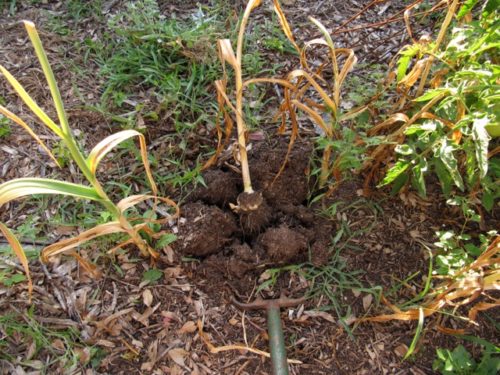
- If the grade is enough frost-resistant, the stalks of the gladiolus are cut (at the ground level), and the place of growth is poured with a thick layer (about 20 cm) sawdust or straw. In the cold regions, the site is additionally covered with a film (or a sweetheart) to protect the plant from cold and dampness in the period of thaws. The clubnellukovitsa "cattures" the powerful strong plant that blooms before, is more abundant and longer.
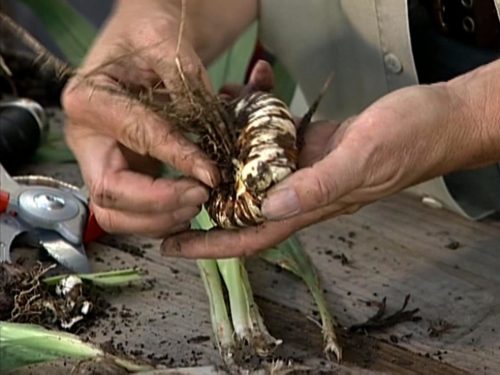
- The well-developed bulb for the season "gives" about 4-6 subsidiaries. Drops off the plant, cut off all the stems with the leaves, leaving a short funeral to 5 cm. The clubnelluca slightly shake off the ground and dried, without cutting the roots, in the room about 2 weeks.
- How to keep Japanese gladioli? The dried bulbs are stacked in a box or a box, fall asleep with dry peat or wood sawdust and put on storage in a cool place with a temperature of no more than + 4-7 0C (basement or bottom shelf of the refrigerator, for example).
- The roots of the bulbs are cutting off in the spring when preparing the planting material to landing. At the same time, the residue of the stem is removed, purified from scales, sedimentary instances are separated and the bulbs are soaked at 6 o'clock in the solution (20 g per bucket of water) mineral fertilizer. Large daughter clubnelluca is usually blooming in the first year after landing.
- Some flowerflowers prefer to observe the bloom of gladiolus, even with the onset of cold weather. For this fall, the plant is not cut off, and transplanted into the pot and enter the room. Even during the month, the gladiolus will delight those around them with their buds.
Transplant of Japanese gladiolus
- The Japanese gladiolus quickly grow up and needs a regular transplant. One bulb for the season "gives" 5-6 subsidiaries.
- As a rule, the bushes of Japanese gladiolus are searched every 4-5 years at the beginning of spring.
- Not extended (dense) montstouration kurtins quickly weaken, flowering decreases, the decorativeness of the plant is lost.
The reproduction of Japanese gladiolus
- The simplest and most common way to reproduce the Japanese gladiolus is the branch of subsidiaries "kids" from the maternal bulb. Separated little bulbs grow rapidly, gain momentum and in a year turn into a full blooming bush. In the spring, subsidiaries are separated from the maternal, sort and plant in an open ground. Small instances are not strongly plugged into the soil, there will be a hole (or groove), a depth of 3-5 cm.
- The seed method of reproduction is as simple, but bloom will have to wait for about 1 year longer (compared to the daughters). In addition, as is well known, seeds may not fully repeat the signs of the parent individual. Seeds in the gladiolus of brown color, rather large sizes. Collect seeds in late autumn, so in the cold regions, the seeds simply do not have time to ripe. Sowing it is better to exercise in winter (in February) so that the shoots have already grown up to spring and were ready for a transplant to open ground. For sowing, we use ready-made soil or mixed the turf soil with humus, sand and peat in a 2: 2: 1 ratio, respectively. Containers with sinky seeds are placed in a light warm place, for example, on the windowsill. The younger seedlings are pricted in pots or boxes and gradually temper. Approximately in May, the seedlings with the priest land of land are transplanted to the garden.
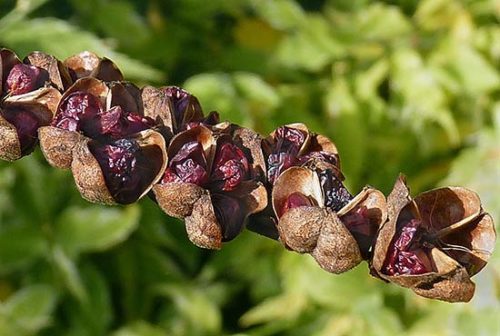
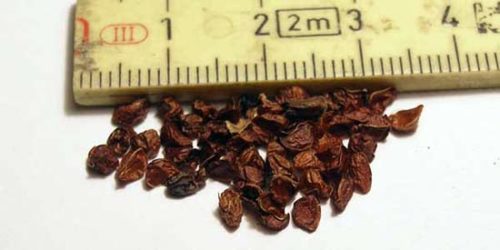
Using Japanese Gladiolus in Landscape Design
- Japanese gladiolus thick curtains perfectly "fit out" in various floral compositions and decorative landscapes.
- Such perennials as Echinacea, Bookophia, Yarrow, Rudbeckia, Georgin, Salvia, and others are considered the best partners for the Montstourcy.
- Speeciously look at the landing of Japanese gladiolus with decorative herbs or cereal plants.
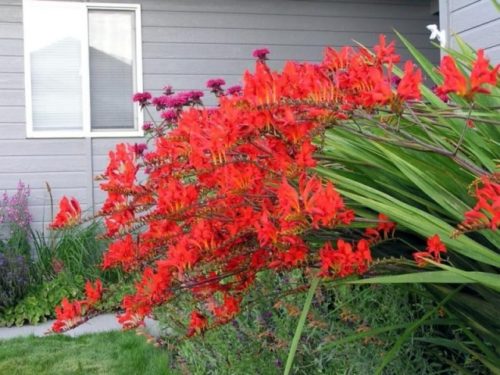
- Most often, the bright perennial planted with cascades, in water bodies, near the arbors or along the gardens.
- Long blooming montstourcies are usually placed on the background of low-level plants, in the first rows of mixtures.
- It looks exotic, Japanese gladiolus in tropical, "dry" and gravel gardens, against the background of green lawn grass.
- The fact that a long-term bulbous culture is capable of growing strongly in a short time is used by flowers to fill large areas by soil crops.
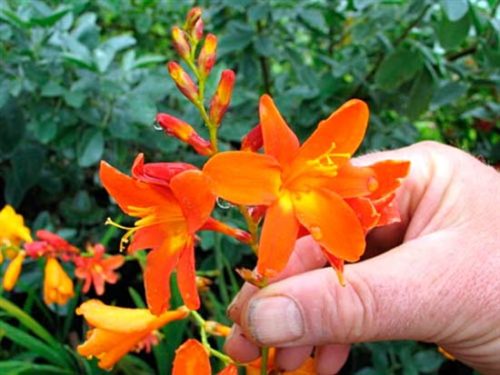
Conclusion
Japanese gladiolus is an unusually attractive blooming culture, widespread during the design of flower, gardening zones and other landscapes. Such popularity of the bulbous plant has gained due to unpretentiousness in care, simplicity when landing and rapidly reproduction.
The long-term culture does not need frequent irrigation, resistant to diseases, quickly grow in real floral "colonies", blooms abundantly and long.
Lush curtains of narrow long leaves and diverse palette of the paint palette of the mongrels of the montpsie "conquered the hearts" of many flower water and landscape designers.
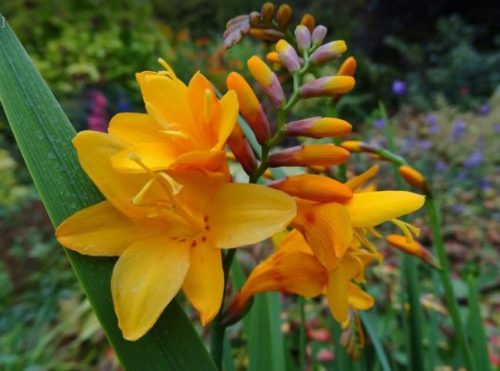

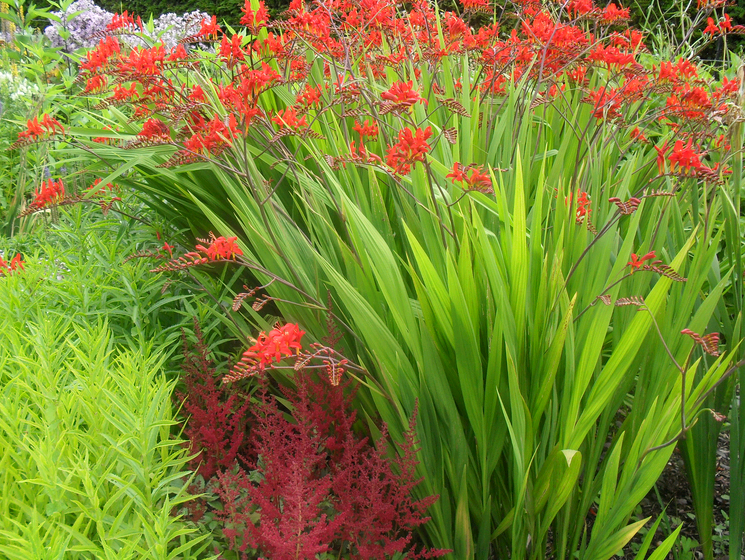
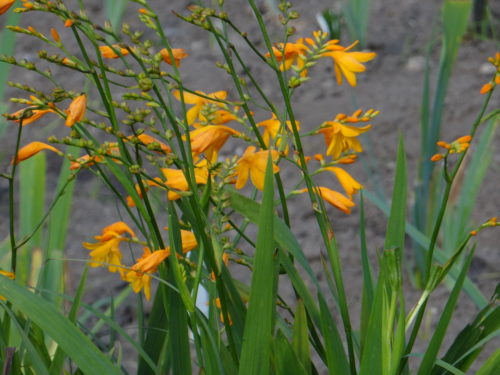
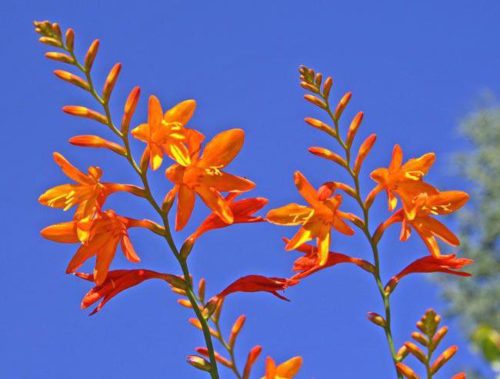
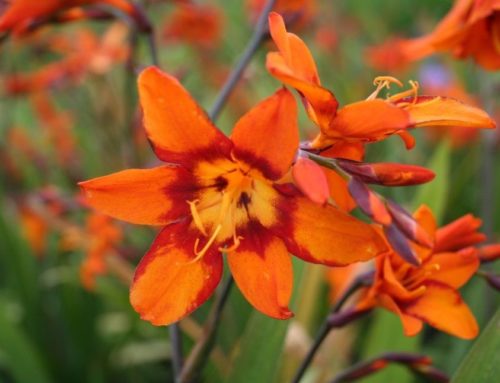
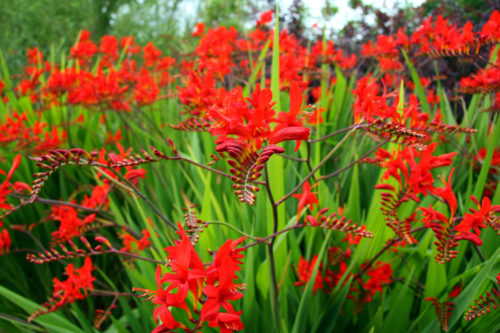
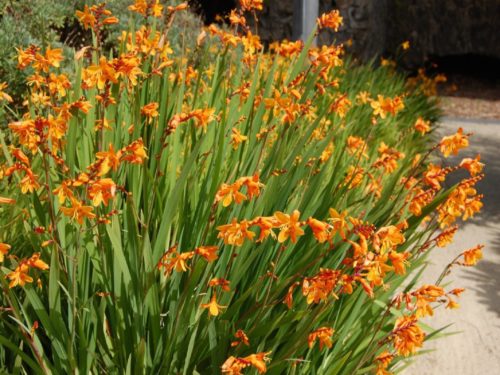
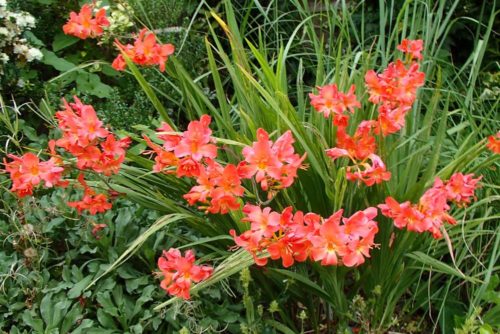
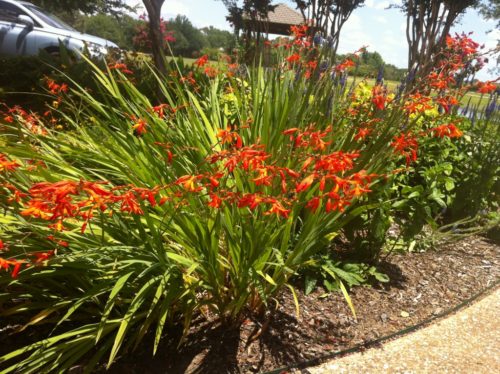
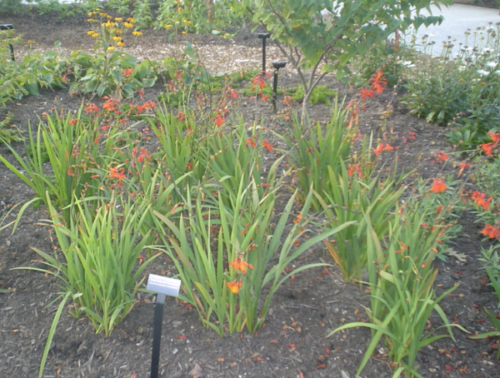
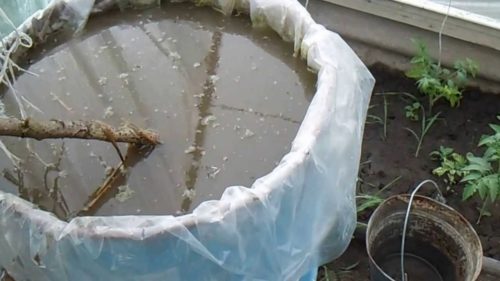

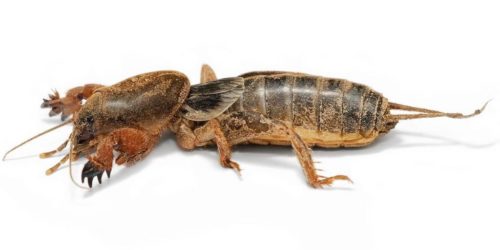

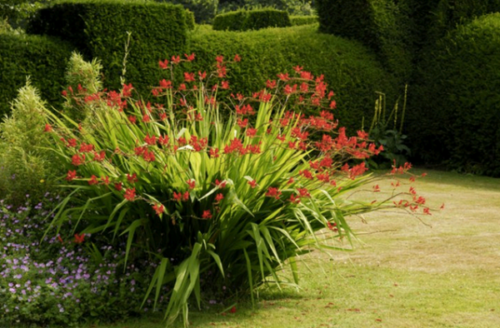

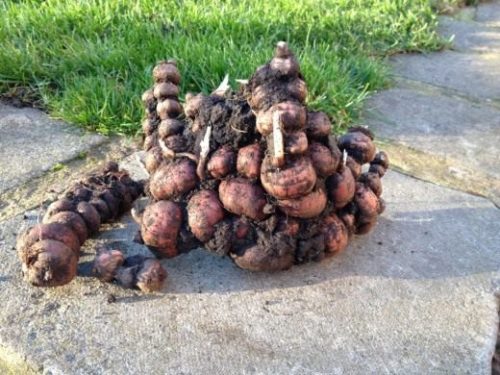
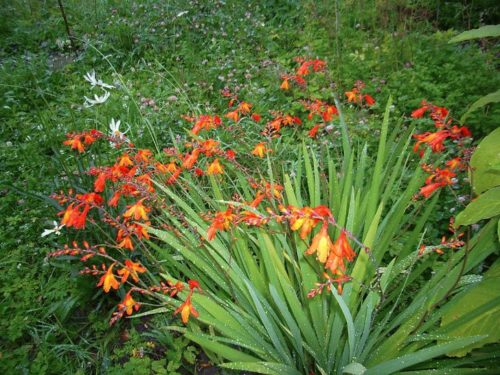
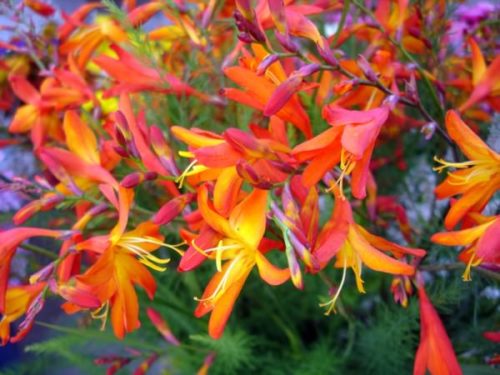
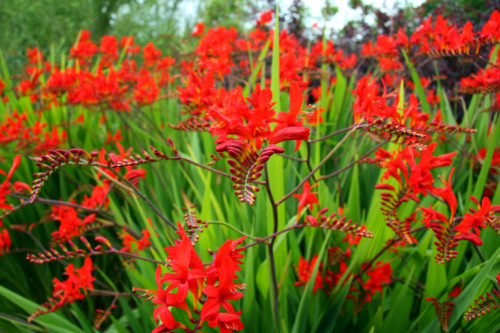
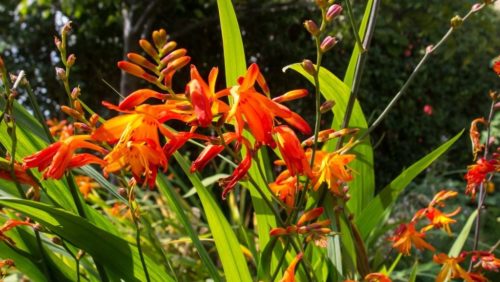
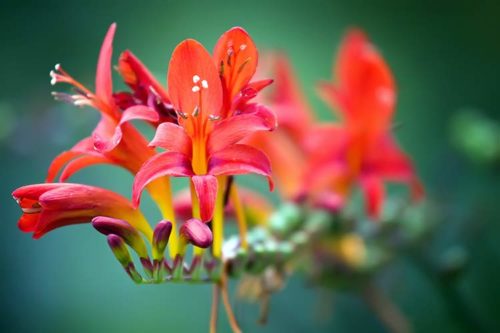


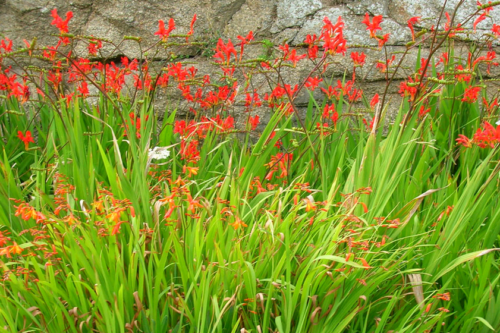
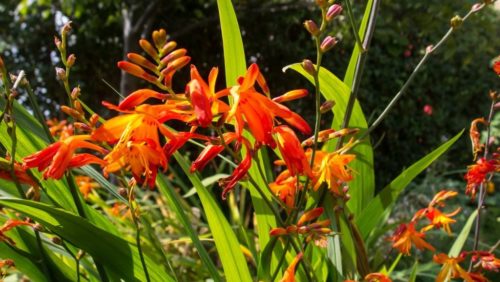












 Start a discussion ...
Start a discussion ...